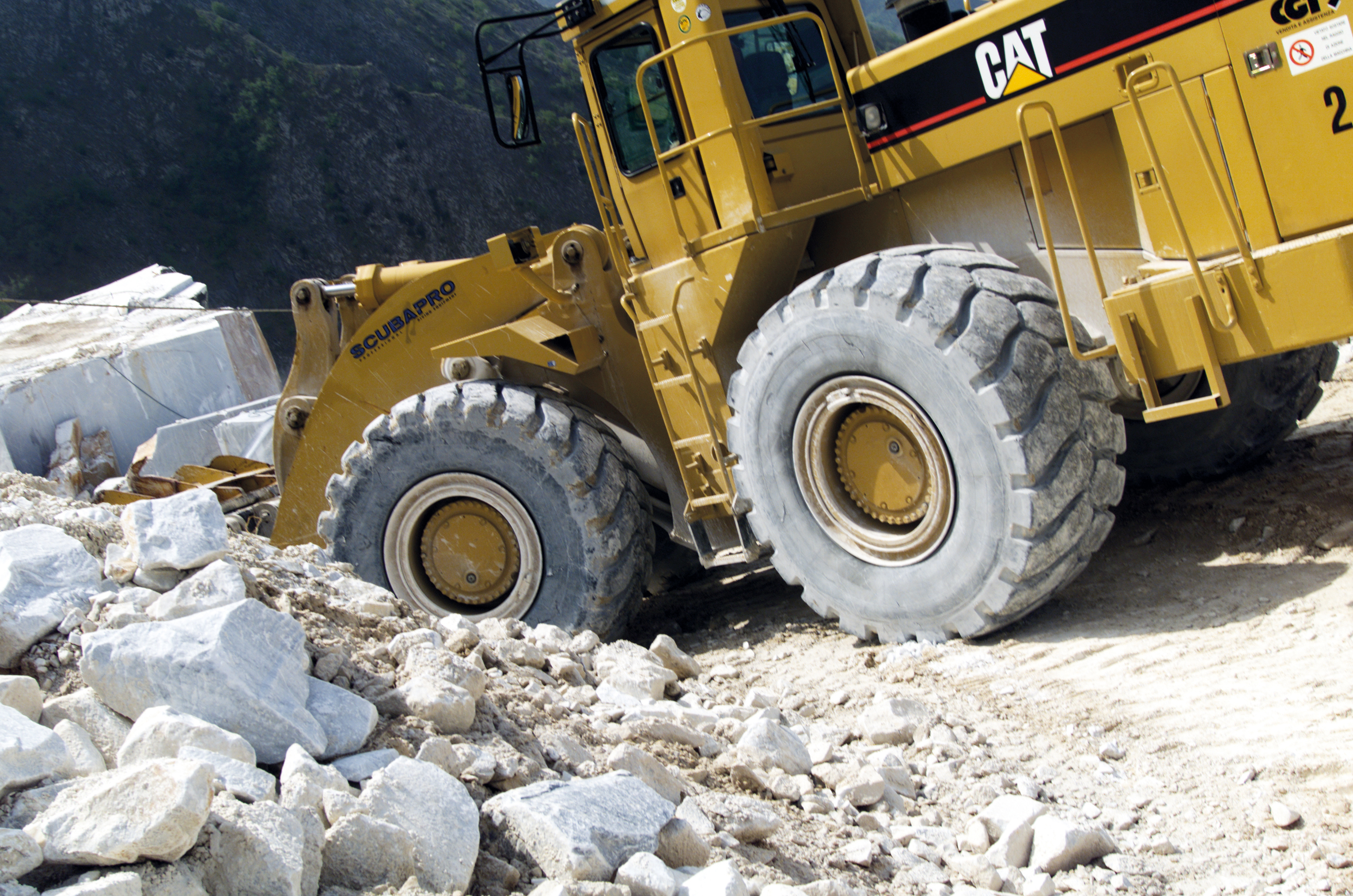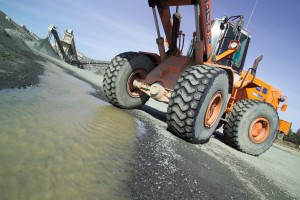OTR tyre sales to grow 4.7% CAGR 2017 – 2022
 The latest data suggests the global OTR tyre sector will expand at a Compound Annual Growth Rater (CAGR) of around 5 per cent between 2017 and 2025
The latest data suggests the global OTR tyre sector will expand at a Compound Annual Growth Rater (CAGR) of around 5 per cent between 2017 and 2025
But tariffs likely to impact OTR sector moving forward
Whether you call them off-the-road, OTR or earthmover tyres, these products are some of the most valuable tyres in the market. And with good reason. Not only are they the physically largest tyre product segment on the planet, these products are often also required to endure the greatest pressures in the most unforgiving circumstances.
However, due to the relative small unit volumes involved combined with the high individual values of each product, prices in this segment – perhaps more than any other – feel the international ripple effects of legislation, supply and demand around the world. So, when there’s a production problem in one country, there can be a supply problem around the world. And when there’s a tariff in one country, product will need to be sold in other markets or at higher prices in the tariff-affected area.
And with the US Department of Commerce considering a new round of tariffs against OTR tyres produced in China, this month’s OTR tyre feature considers both the impact of such developments as well as the latest product and corporate news in the sector. But first a little background:
The latest Research and Market data on the global OTR tyre sector predicts it will expand at a Compound Annual Growth Rater (CAGR) of around 5 per cent between 2017 and 2025. In monetary terms this equates to a current market of US$5.34 billion in 2017 reaching $7.68 billion by 2025. Considering that OTR tyre and track manufacturer Camso suggests the sector represents 11 per cent of the global tyre market, these figures put the total global tyre market at $48.545 billion in 2017, rising to $69.818 billion in 2025. This stands in sharp contrast with MarketLine’s global tyre market data published in April, which values the global tyre market $638 billion, rising to $807 billion by 2022.
However, the Research and Markets data is directly comparable with the 2018 MarketLine global data when it comes to growth. In this respect Research and Markets predicted progress at 4.64 per cent CAGR between now and 2022. According to MarketLine, in 2022 the total global tyre and rubber market is forecast to have a volume of 5,805.3 million tyres, an increase of 26 per cent since 2017. The compound annual growth rate of the market in the period between 2017 and 2022 is specifically predicted to be 4.7 per cent – almost exactly the same figure.
Therefore, while the total monetary value of the segment looks a bit off – something that could be explained by the particular definitions deployed by each of the two research firms – growth estimate seem to concur.
According to Research and Markets, increasing sales of agricultural tractors as well as construction and mining equipment is behind the growth in OTR tyres requirements. At the same time, increases in infrastructural activities, government subsidies and the apparent rapid mechanization in agriculture is expected to boost the OTR tyre demand too.
Infrastructure projects support growth
Specific examples of the kinds of project that have been driving demand around the world include largescale events such as: the 2018 World Cup in Russia and 2020 Olympics in Japan.
The agriculture tractors segment is projected to be the largest segment in the OTR tyres market, by application. The growth of this segment can be attributed to the increasing focus on mechanization and government subsidies in regions such as Asia Oceania and Europe. The use of tractors has significantly increased in developing and farming countries such as China and India. The agriculture tractors segment is estimated to lead the OTR tyres retreading market as well, by volume.
Asia Oceania and North America are estimated to dominate the OTR tyres market during the forecast period. While Asia Oceania is estimated to be the largest market, North America is estimated to be the fastest growing market during the forecast period. Market growth in North America can reportedly be attributed to the availability of state-of-the-art technology and the presence of key OEMs, which is expected ultimately increase the application of OTR tiers. At the same time there is a radialisation trend away from bias-ply tyres, which is likely to drive development in the more mature markets such as Europe and North America.
On the other hand, the major factors hindering the growth of the OTR tyre market for the organized players are the high cost of research and development as well low-cost competition. Perhaps this latter point can help to explain the recurring cycle of emphasis on import tariffs in the most developed markets – something that has a history a markedly altering of the OTR tyre manufacturing and distribution chain in the past.
5 Chinese OTR tyre importers remanded to US Department of Commerce
The US Court of International Trade has remanded five Chinese OTR tyre importers to the U.S. Department of Commerce an antidumping duty determination against and ordered the agency to recalculate the antidumping margins it issued against them in a 2016 administrative review.
On April 4, CIT Chief Judge Timothy C. Stanceu issued a decision stating that Commerce had erred in its review in its calculation of antidumping duties for the 2013-2014 period against Xuzhou Xugong Tyres Co. Ltd., Qingdao Qihang Tyre Co. Ltd., Qingdao Free Trade Zone Full-World International Trading Co. Ltd., Trelleborg Wheel Systems (Xingtai) Co. Ltd. and Weihai Zhongwei Rubber Co. Ltd.
In its 2016 review, Commerce assigned antidumping duties for 2013-2014 of 65.33 percent to Xugong, 79.86 percent for Qihang and 70.55 percent to the others.
In their appeal to the CIT, Qihang and Xugong argued that Commerce erred in making deductions for unrefunded value-added tax when determining export prices and constructed export prices of their tires.
They also claimed that Commerce’s calculation of a “surrogate” value for one their production materials, reclaimed rubber, was not supported by substantial evidence.
Stanceu ordered Commerce to submit a new determination to the court recalculating the export prices and constructed export prices for Xugong and Qihang without making deductions for Chinese value-added tax.
He also ordered the agency to reconsider, and redetermine as necessary, the surrogate values for reclaimed rubber and foreign inland freight.
For all plaintiffs, Stanceu ordered Commerce to recalculate the dumping margins and submit the recalculations within 90 days.
DOC reduces Guizhou Tyre duty rate
Import tariffs have changed the shape of the global OTR tyre distribution chain in the past, will they do so again this time round?
Less than 10 days later the US Department of Commerce also revised its countervailing duty rate for Guizhou Tyre.
According to the 13 April 2018 edition of the US government’s Federal Register, the new rate for Guizhou is 31.49 per cent down from a rate of 39.10 per cent that the DOC assessed in October 2017.
The new rate also applies to all non-selected OTR tyre companies under review, the Federal Register said.
The countervailing duty rate for Xuxhou Xugong Tyres remains unchanged at 91.94 per cent, the DOC also determined during its review.
What is clear is that – as in other sectors – there is an increasing trend towards import tariffs against Chinese produced tyres being brought into mature markets such as the USA. Previous cases have shown us that such measures can have a marked impact on the shape and spread of OTR distribution around the world, so we shouldn’t be surprised is something similar happens again this time round. However, the more specific question of whether such measures will also be deployed in the European markets is somewhat more opaque. The fact that EU is so closely considering import tariffs against Chinese-produced truck tyres should however be an indication of what can happen in such cases. Either way, the high technology and high value OTR tyre sector continues to grow in both volume and monetary terms, providing plenty of opportunities for business growth in the next three to five years at least.





Comments